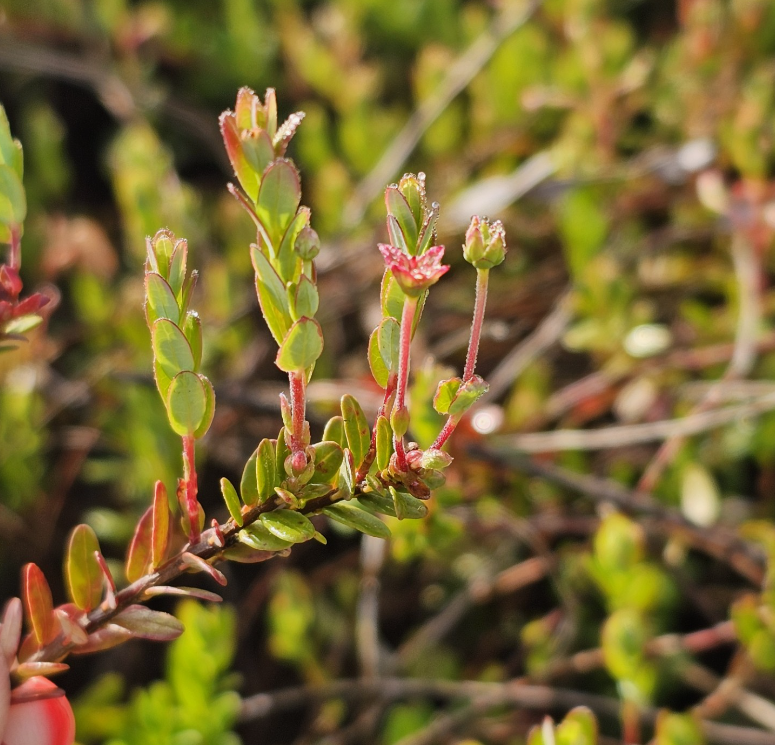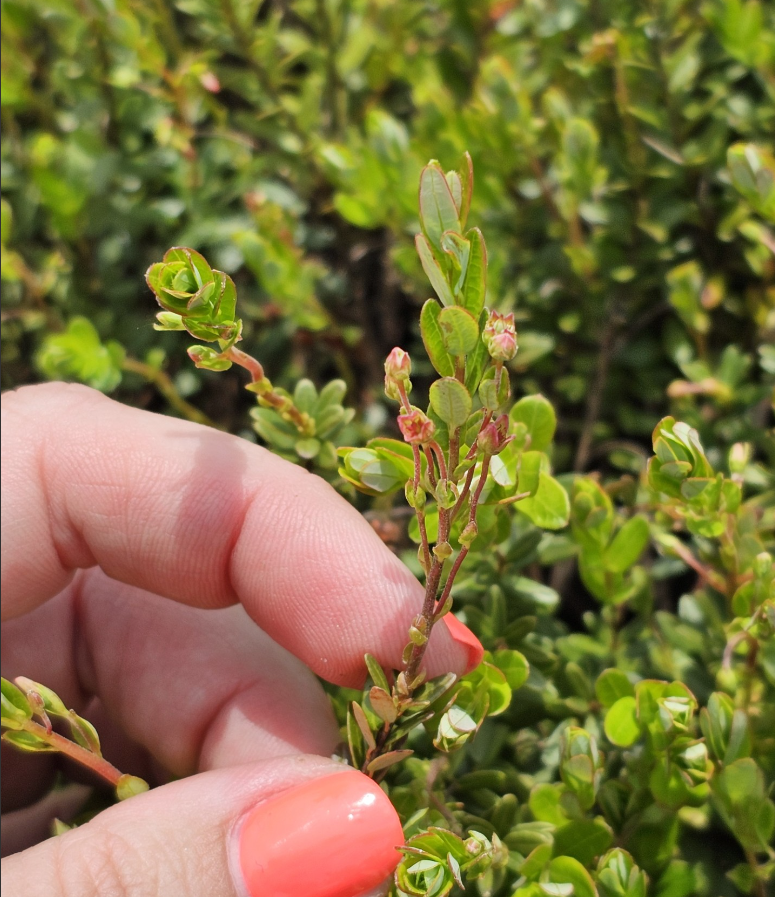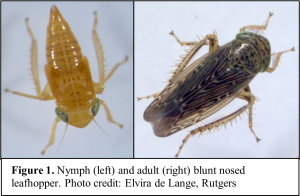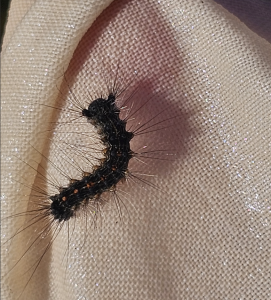Cranberry Scouting Notes (False Blossom, BNLH Range, Spongy Moth)
Correction: Spongy Moth larvae do in fact have a treatment threshold in cranberries: 4.5 larvae in sets of 25 sweeps. Thanks to Cesar Rodriguez-Saona of Rutgers for this information. https://plant-pest-advisory.rutgers.edu/spongy-gypsy-moth-seen-in-cranberry-beds/ . Rutgers recommend the use of Intrepid, Delegate, Altacor, Exirel, or Verdepryn if populations exceed action thresholds. These are reduced-risk insecticides that are very effective against lepidopteran pests.
False Blossom Identification
As bloom approaches, False Blossom disease is becoming “text-book” obvious. Be on the lookout for floral abnormalities and erect (instead of hooked) pedicels, and witches’ broom symptoms. The phytoplasma is present throughout the entire plant (leaves, stems, and roots) and so complete rogueing-out of infected plants is the only way to remove the disease from your bed. If you would like assistance with identification, or if you find false blossom and would like to participate in research (anonymized), contact laholland@wisc.edu.


Floral abnormalities and erect pedicels commonly associated with cranberry false blossom disease. Photos via Pam Verhulst, Lady Bug IPM.
BNLH Range

The Blunt-Nosed Leaf Hopper, an insect pest which is the vector of False Blossom Disease, has the potential to be found in sweeps in ALL Wisconsin growing ranges. Even if your marsh has not found BNLH in past years, be on the lookout for this pest. If you find a specimen that you would like assistance in identifying, please contact allison.jonjak@wisc.edu . Blunt-Nosed Leaf Hoppers are easier to control in their nymphal form. As bees come in, any treatments of BNLH will need to wait until blossom is over. Check with your handlers before making applications.
Spongy Moth

While you may be familiar with Spongy Moth (Lymantria dispar, formerly known as Gypsy Moth) from homeowner or forestry fact sheets, this caterpillar is beginning to show up in moderate numbers in cranberry IPM sweeps. According to PJ Liesch, “These probably spilled over from nearby wooded areas—just out of the egg, the small caterpillars can “balloon” and by moved around by the wind.”
The Spongy Moth is already established in most counties in Wisconsin. The DNR only requests reports of Spongy Moth if it is found in counties that don’t already have established populations. Currently, only cranberry growers in Sawyer, Washburn, Burnett, and Rusk counties would need to report sightings, by emailing spongymoth@wisconsin.gov . You can always check for the most recent map under item 6 at https://spongymoth.wi.gov/Pages/home.aspx .
Spongy moths are not a traditional cranberry pest, but they are a non-discriminatory feeder, so they bear watching if populations are abundant. Research-based threshold levels have not yet been established in cranberry.
The recommended product for homeowners is BT kurstaki strain: for example DiPel and Crymax. The DiPel formulation from Valent does have a supplemental label for use in cranberry. (link to supplemental label from CDMS) . BTs in general must be ingested to work against caterpillars. BTs are most effective against small caterpillars. As caterpillars grow in size, efficacy will decline.
Cranberry growers may also choose to use conventional products in accordance with the label (that is, labeled for the crop of cranberries and the pest of spongy moth/gypsy moth). Because the name change for Lymantria dispar from gypsy moth to spongy moth is recent, many labels will still list “gypsy moth” as the target pest. Growers who were treating for BHFW or other prebloom insects with flooding, Fanfare, Cormoran, Delegate, and Orthene all found that spongy moth caterpillars were controlled as well.
Always make applications in accordance with the label, as the label is the law, and check with your handler before purchasing product in case handlers have additional restrictions on top of those on the label. Any products listed are for illustrative purposes and are not an endorsement of one product over another.
Citations
https://hort.extension.wisc.edu/files/2022/04/Spongy_Moth_2022.pdf
https://njaes.rutgers.edu/fs1248
https://wood.extension.wisc.edu/files/2019/05/Issue-5.pdf
https://cdn.shopify.com/s/files/1/0145/8808/4272/files/A4169.pdf
https://spongymoth.wi.gov/Pages/home.aspx
This article was posted in Cranberry, Disease, Insects and tagged Allison Jonjak, Blunt Nosed Leaf Hopper, Cranberries, cranberry scouting, disease, false blossom, insects, Pamela Verhulst, PJ Liesch, spongy moth.
